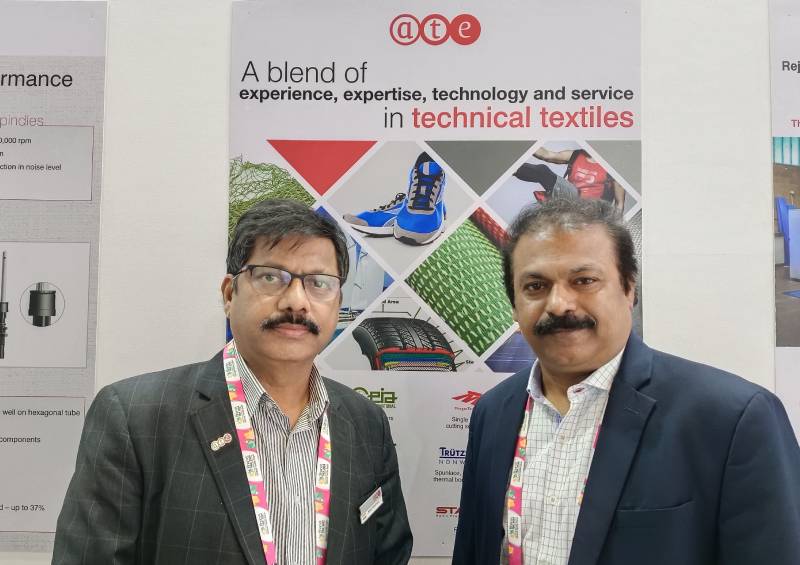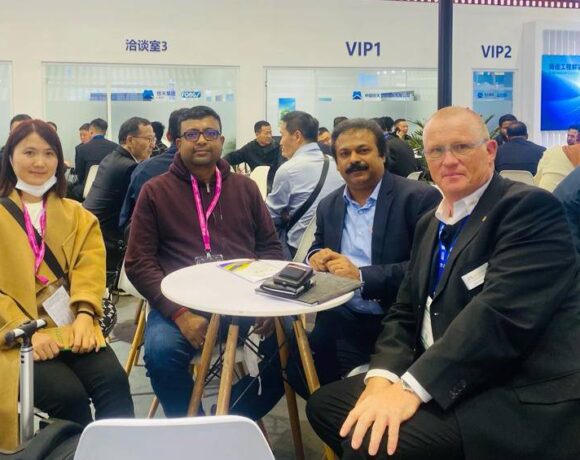Sustainability Has Become Increasingly Crucial And Gaining More Traction

We anticipate further market growth in the coming months, states Kiran Hanchate, while S. Rajendran informs that there is a notable uptick in orders, particularly in the home textile sector, with several existing customers considering expansion
How has Bharat Tex been for A.T.E Group?
Kiran: I believe Bharat Tex marks a significant milestone as it’s the first edition in India that has brought the entire textile value chain together under one roof. As a machine manufacturer, it provided us with valuable insights into the upstream processes and helped us understand the direction in which we can innovate as machinery manufacturers.
Rajendran: Indeed, it’s been quite interesting. Recently, during our visit to Heimtextil in Frankfurt, Germany, our customers were buzzing about Bharat Tex, citing it as one of the best shows akin to Heimtextil. When we arrived here, we were pleasantly surprised by the extensive showcase covering all aspects of textiles—from technical textiles to home textiles, apparel textiles and knitwear. Our machinery team secured a space here, initially uncertain of its relevance, given the focus on textile producers. However, to our delight, we’ve had significant customer engagement and fruitful discussions regarding machinery. Overall, it’s been a positive experience for us at A.T.E Group.
What new innovations have caught your attention at Bharat Tex, particularly in terms of sustainability?
Kiran: Sustainability has become increasingly crucial in the textile industry. We’ve noticed that many customers, including yarn producers, fabric manufacturers and fibre dealers, are emphasizing sustainability and exploring recycled products.
Rajendran: Sustainability has been a topic of discussion in India for the past decade and it’s gaining even more traction now. Textile producers across the country are placing a strong focus on energy conservation and renewable energy sources. Moreover, there’s a noticeable trend among textile processors towards adopting sustainable technologies. They’re actively seeking ways to reduce chemical consumption, minimize pollution and lower their carbon footprint. In response to this demand, we’re exploring technological solutions that align with these sustainability goals.
How do you view the current market conditions, and what are your expectations for the near future?
Rajendran: The market initially showed signs of sluggishness, but it has begun to recover. During our recent attendance at Heimtextil, we received positive feedback from customers and textile producers alike. There’s a notable uptick in orders, particularly in the home textile sector, with several existing customers considering expansion. Additionally, discussions for greenfield projects, especially in home textiles, are underway, with expectations of at least two or three new projects in 2024. The knit segment is another area of interest, experiencing continuous growth over the past few years, particularly in synthetic knits for activewear. Several entrepreneurs have already initiated pilot schemes, with more projects in discussion. Overall, India’s textile industry is showing promising growth prospects, and we anticipate further expansion in the coming years.
Kiran: I echo Rajendran’s observations. While the market initially experienced a slowdown, recent weeks have brought positive indicators of growth. Feedback from customers at the exhibition corroborates this, with reports of significant footfall and buyer interest. We anticipate further market growth in the coming months, with expectations of a return to track by June or July. Moreover, we’re receiving enquiries for modernization projects, with a notable interest in sustainability and recycling initiatives.














